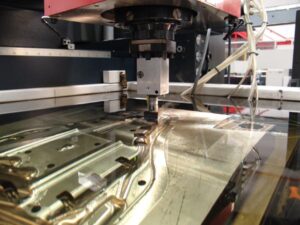 A company from Australia offers a novel fiber optic solution that allows providing conveyor health monitoring by applying real-time data to rationalize production and on-site performance, improve occupational health, hygiene, and safety management, and implement new predictive maintenance and support capabilities to control management.
A company from Australia offers a novel fiber optic solution that allows providing conveyor health monitoring by applying real-time data to rationalize production and on-site performance, improve occupational health, hygiene, and safety management, and implement new predictive maintenance and support capabilities to control management.
Thus, the fiber optic technology was tested in surface and sub-surface environments of some of the world’s largest mining companies and bulk material handling the equipment resulting in the accessibility of optical fiber sensing for present sale all over the world. The fact is that efficient conveyor systems are highly important because the profitability of mining companies depends fully on such fiber optic sensing systems.
Additionally, the mining industry has always a huge challenge of conveyor maintenance, and traditional sensing technologies for advanced conveyor failure detection are often precarious, subjective, they require many time and labors. The new fiber sensing system combines the technology of optical fiber detection with a sensing technology platform, “advanced signal processing algorithms and predictive analytics” enabling to acoustically monitor and check conveyor health.
The advantages of presented fiber optic solution include the provision of accurate data to maintenance technicians, site personnel, regional operational hubs, and global headquarters, the opportunity to obtain daily asset reliability reports from every conveyor, at every site worldwide due to the connection of the fiber system to
a wireless Internet.
The operation of the fiber optic system is based on the transmission process of short laser beam pulses along a single optical fiber cable installed along the length of a conveyor, while acoustic disturbances from the conveyor sensing system lead to tiny changes in the backscattered laser beam light, which is then classified into distinguished parameters.
Also, the obtained data is then processed, the following information is gathered:
- the detection of a damaged ball or a broken cage in a ball race;
- monitoring and “tracking idler bearings as they progressively wear”;
- the prediction of potential bearing seizures and establishment of roller replacement priorities at the next maintenance shut down.
Finally, the fiber optic technology of distributed acoustic sensing is considered to be “the way of the future for conveyor health monitoring”. Such fiber optic solution successfully optimizes conveyor operation and provides essential cost savings for operators. Herewith, this fiber sensing system monitors the condition of every conveyor roller that can contain 7.000 bearings per kilometer.
Optromix is a manufacturer of innovative fiber optic products for the global market. The company provides the most technologically advanced fiber optic solutions for the clients. Optromix produces a wide range of fiber optic devices, including cutting-edge customized fiber optic Bragg grating product line and fiber Bragg grating sensor systems. Moreover, Optromix is a top choice among the manufacturers of fiber Bragg grating monitoring systems. If you have any questions, please contact us at info@optromix.com


 The continuous development of high-temperature
The continuous development of high-temperature  Nowadays train accidents often cause severe injuries and even cases of death. Nevertheless, researchers from China have designed new
Nowadays train accidents often cause severe injuries and even cases of death. Nevertheless, researchers from China have designed new  The researchers from NASA Armstrong Flight Research Center form a partnership with members of the Naval Surface Warfare Center to create fleet maintenance capabilities with the help of new
The researchers from NASA Armstrong Flight Research Center form a partnership with members of the Naval Surface Warfare Center to create fleet maintenance capabilities with the help of new  The members of NASA company have decided to offer collaboration to companies providing
The members of NASA company have decided to offer collaboration to companies providing  Proper fire detection in the mining area is the number one priority because fire can evoke damages to valuable assets, downtime in operation, and even loss of lives. Herewith, the installation of fire protection devices can be complicated by harsh environmental conditions of the mining area because industrial equipment produces dirt, dust, humidity, and corrosive atmospheres in the production, storage, or transport of goods. Nevertheless, the application of modern
Proper fire detection in the mining area is the number one priority because fire can evoke damages to valuable assets, downtime in operation, and even loss of lives. Herewith, the installation of fire protection devices can be complicated by harsh environmental conditions of the mining area because industrial equipment produces dirt, dust, humidity, and corrosive atmospheres in the production, storage, or transport of goods. Nevertheless, the application of modern Nowadays researchers from California are planning to use “dark
Nowadays researchers from California are planning to use “dark  Recently a new simple low-cost technology has been developed for security monitoring of the borders. Initially, the technology that includes
Recently a new simple low-cost technology has been developed for security monitoring of the borders. Initially, the technology that includes  EDM or electrical discharge (spark) machining is the most advanced of metalworking technologies. EDM is worldwide used because of its high accuracy and machining applications where traditional metal removal is highly difficult or even impossible.
EDM or electrical discharge (spark) machining is the most advanced of metalworking technologies. EDM is worldwide used because of its high accuracy and machining applications where traditional metal removal is highly difficult or even impossible.